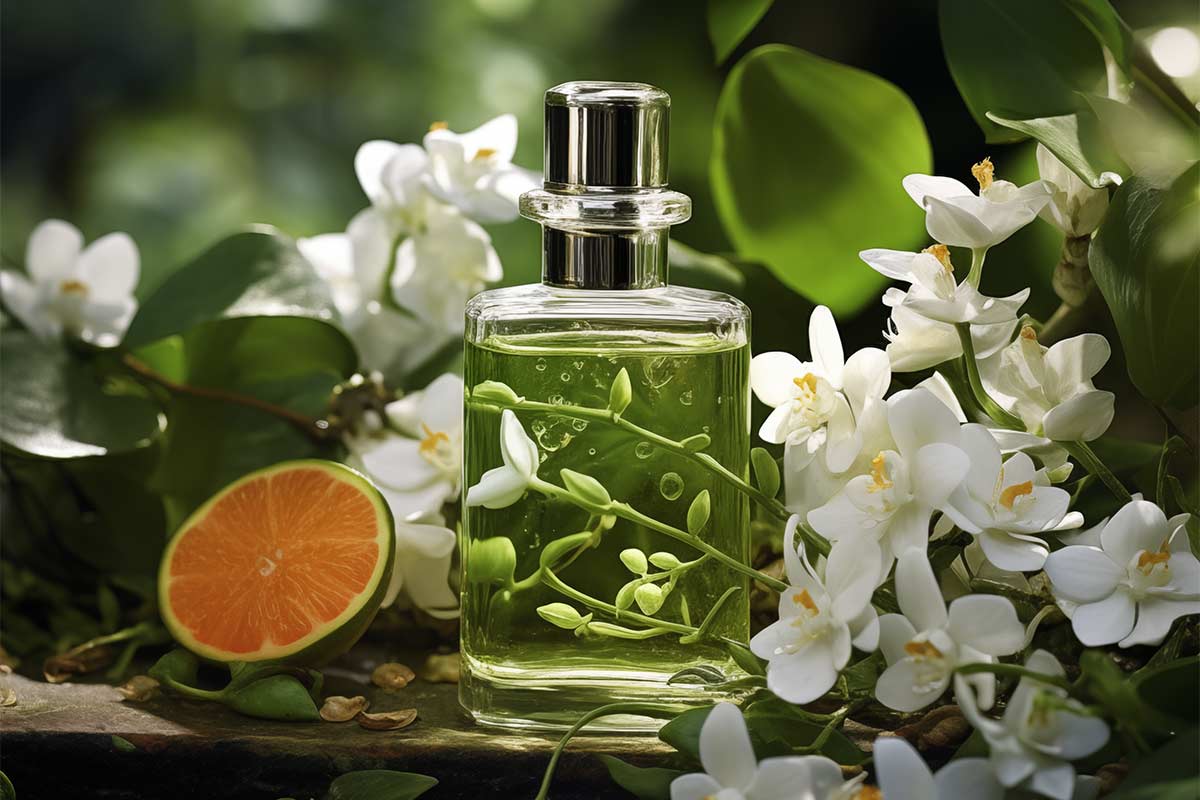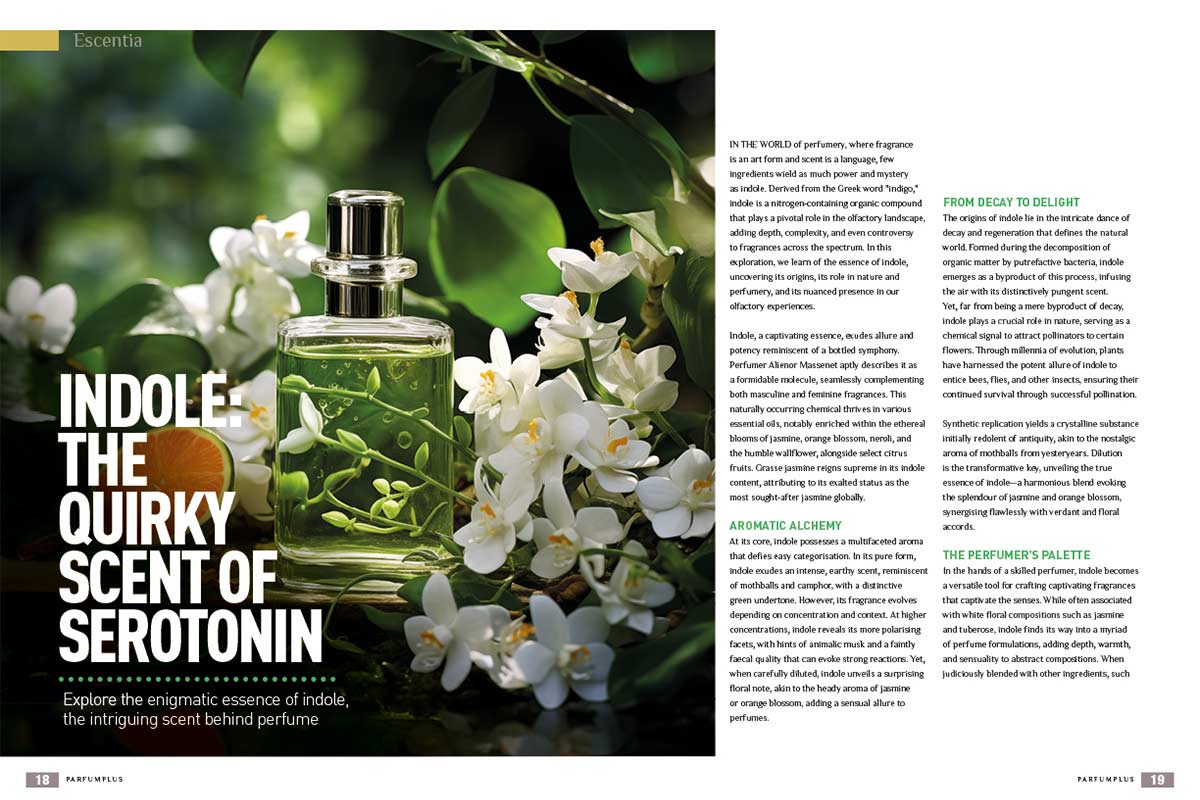
Indole: The Quirky Scent Of Serotonin
Explore the enigmatic essence of indole, the intriguing scent behind perfume
In the world of perfumery, where fragrance is an art form and scent is a language, few ingredients wield as much power and mystery as indole. Derived from the Greek word "indigo," indole is a nitrogen-containing organic compound that plays a pivotal role in the olfactory landscape, adding depth, complexity, and even controversy to fragrances across the spectrum. In this exploration, we learn of the essence of indole, uncovering its origins, its role in nature and perfumery, and its nuanced presence in our olfactory experiences.
Indole, a captivating essence, exudes allure and potency reminiscent of a bottled symphony. Perfumer Alienor Massenet aptly describes it as a formidable molecule, seamlessly complementing both masculine and feminine fragrances. This naturally occurring chemical thrives in various essential oils, notably enriched within the ethereal blooms of jasmine, orange blossom, neroli, and the humble wallflower, alongside select citrus fruits. Grasse jasmine reigns supreme in its indole content, attributing to its exalted status as the most sought-after jasmine globally.
Aromatic Alchemy
At its core, indole possesses a multifaceted aroma that defies easy categorisation. In its pure form, indole exudes an intense, earthy scent, reminiscent of mothballs and camphor, with a distinctive green undertone. However, its fragrance evolves depending on concentration and context. At higher concentrations, indole reveals its more polarising facets, with hints of animalic musk and a faintly faecal quality that can evoke strong reactions. Yet, when carefully diluted, indole unveils a surprising floral note, akin to the heady aroma of jasmine or orange blossom, adding a sensual allure to perfumes.
From Decay to Delight
The origins of indole lie in the intricate dance of decay and regeneration that defines the natural world. Formed during the decomposition of organic matter by putrefactive bacteria, indole emerges as a byproduct of this process, infusing the air with its distinctively pungent scent. Yet, far from being a mere byproduct of decay, indole plays a crucial role in nature, serving as a chemical signal to attract pollinators to certain flowers. Through millennia of evolution, plants have harnessed the potent allure of indole to entice bees, flies, and other insects, ensuring their continued survival through successful pollination.
Synthetic replication yields a crystalline substance initially redolent of antiquity, akin to the nostalgic aroma of mothballs from yesteryears. Dilution is the transformative key, unveiling the true essence of indole—a harmonious blend evoking the splendour of jasmine and orange blossom, synergising flawlessly with verdant and floral accords.
The Perfumer's Palette
In the hands of a skilled perfumer, indole becomes a versatile tool for crafting captivating fragrances that captivate the senses. While often associated with white floral compositions such as jasmine and tuberose, indole finds its way into a myriad of perfume formulations, adding depth, warmth, and sensuality to abstract compositions. When judiciously blended with other ingredients, such as civet or musk, indole imparts a comforting richness and complexity to perfumes, elevating them to new heights of olfactory delight.
Navigating The Challenges
Despite its undeniable allure, indole presents challenges to perfumers seeking to balance its potent aroma with other elements in a fragrance. The infamous "mothball effect," caused by the interaction of indole with certain compounds, can detract from the overall harmony of a perfume, leading to unwanted olfactory discord. To mitigate this issue, perfumers have developed alternatives such as Indolene and Indocolore, which offer a more floral and refined interpretation of indole, without compromising its intrinsic allure.
Indole Beyond Perfumery
Beyond perfumery, indole reveals itself as a versatile and ubiquitous compound with far-reaching implications. From its role as a precursor to serotonin, the "happy hormone" to its presence in plant hormones such as heteroauxin, indole permeates every facet of life, from mood regulation to plant growth and development. As we continue to unravel the mysteries of this enigmatic molecule, its influence on our olfactory experiences and beyond remains a source of endless fascination.
In the tapestry of perfumery, indole stands as a testament to the intricate interplay between nature, science, and art. From its humble origins in decay to its sublime expression in fragrances, indole embodies the essence of transformation, turning the mundane into the magical, and the repulsive into the sublime. As we immerse ourselves in the intoxicating world of scent, let us embrace the enigmatic allure of indole, allowing its aromatic alchemy to transport us to new worlds of olfactory delight.
Discover niche perfumes with the quirky note of indole…
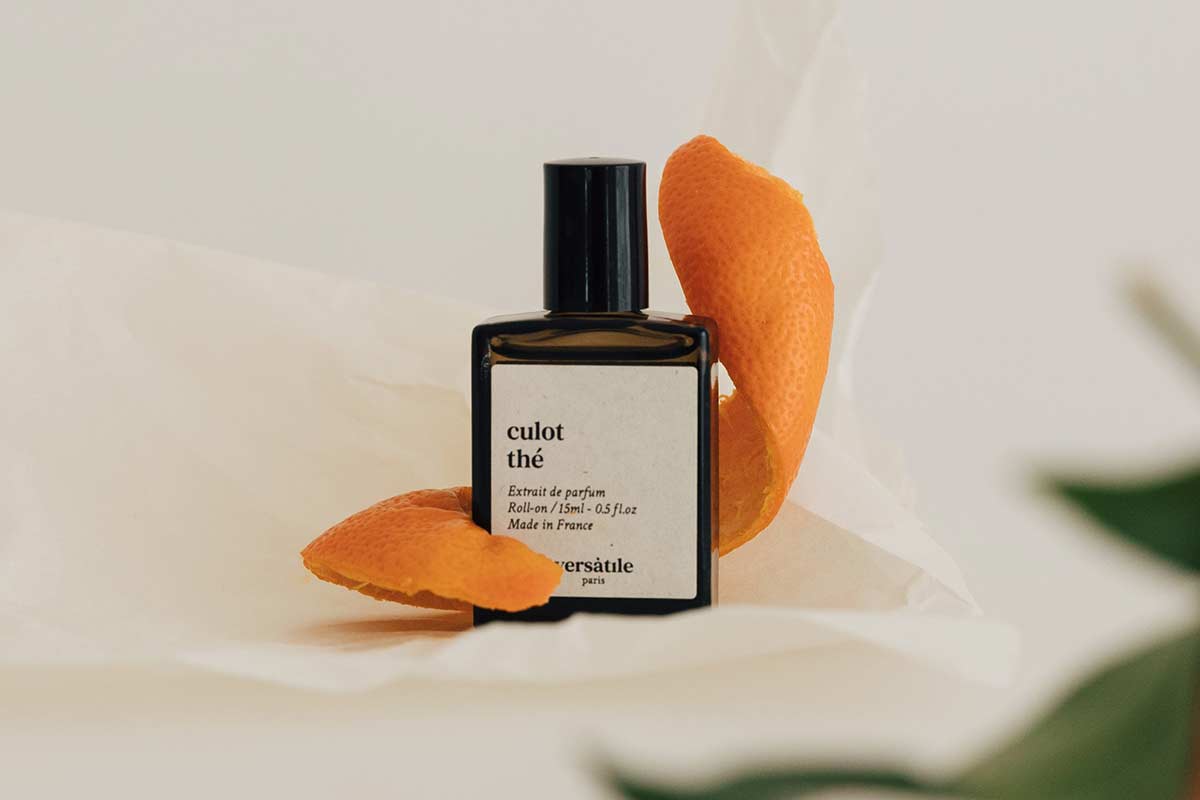
Culot Thé by Versatile Paris
A daring blend of bergamot, black tea, and jasmine, accentuated with the intriguing note of indole, exuding an air of audacious charm and sophistication in its olfactive composition.
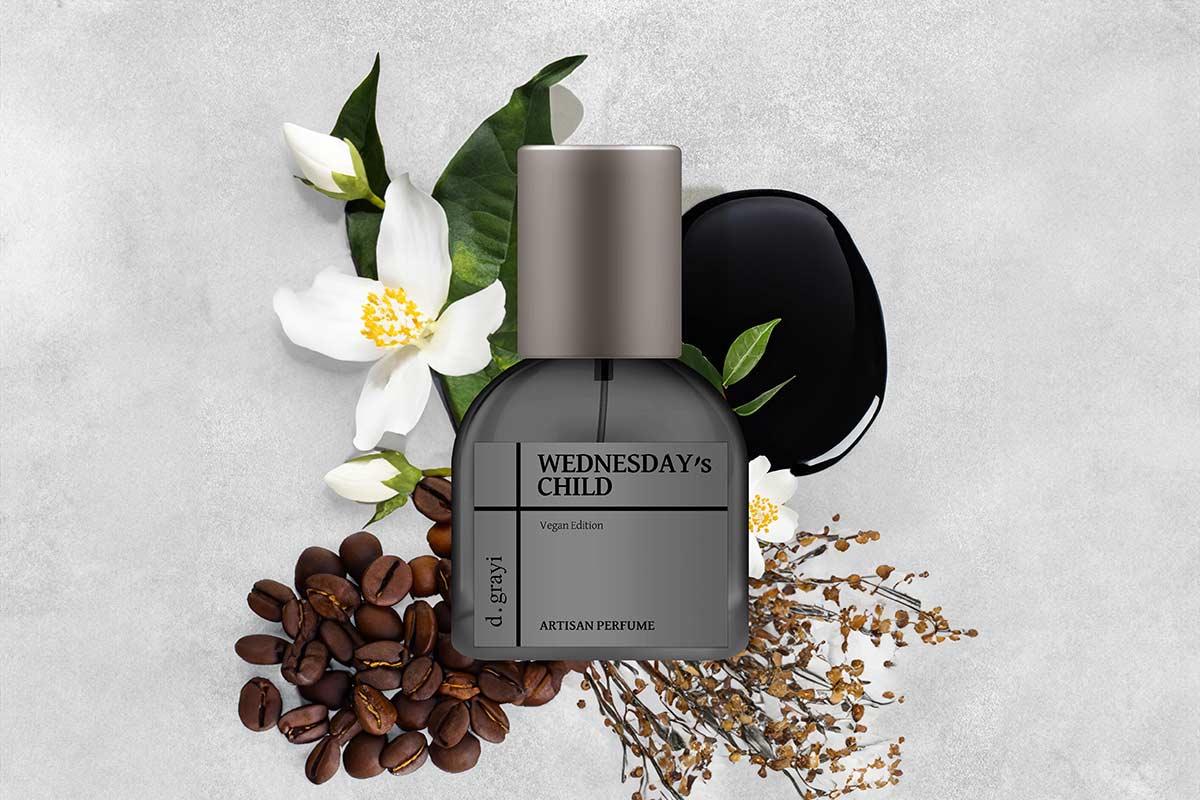
Wednesday's Child (Vegan Edition) by d.grayi
A captivating blend of indolic florals, reminiscent of night-blooming flowers, intertwining with the warmth of candlelight and the earthiness of woods. Mysterious and evocative, perfect for those who embrace enigmatic allure.
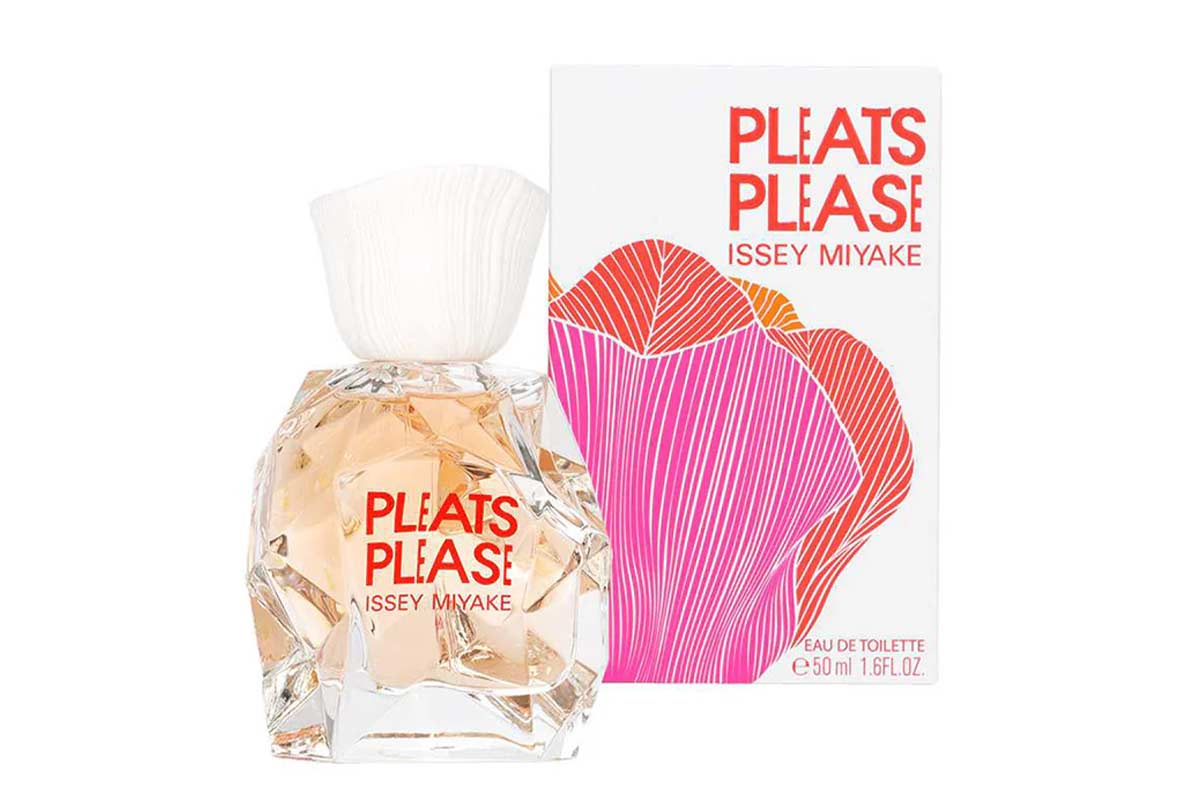
Pleats Please by Issey Miyake
A vibrant blend where the floral sweetness of sweet pea and peony intertwines with the intriguing note of indole, adding depth and allure to this exuberant fragrance, and capturing the essence of joyful optimism.


